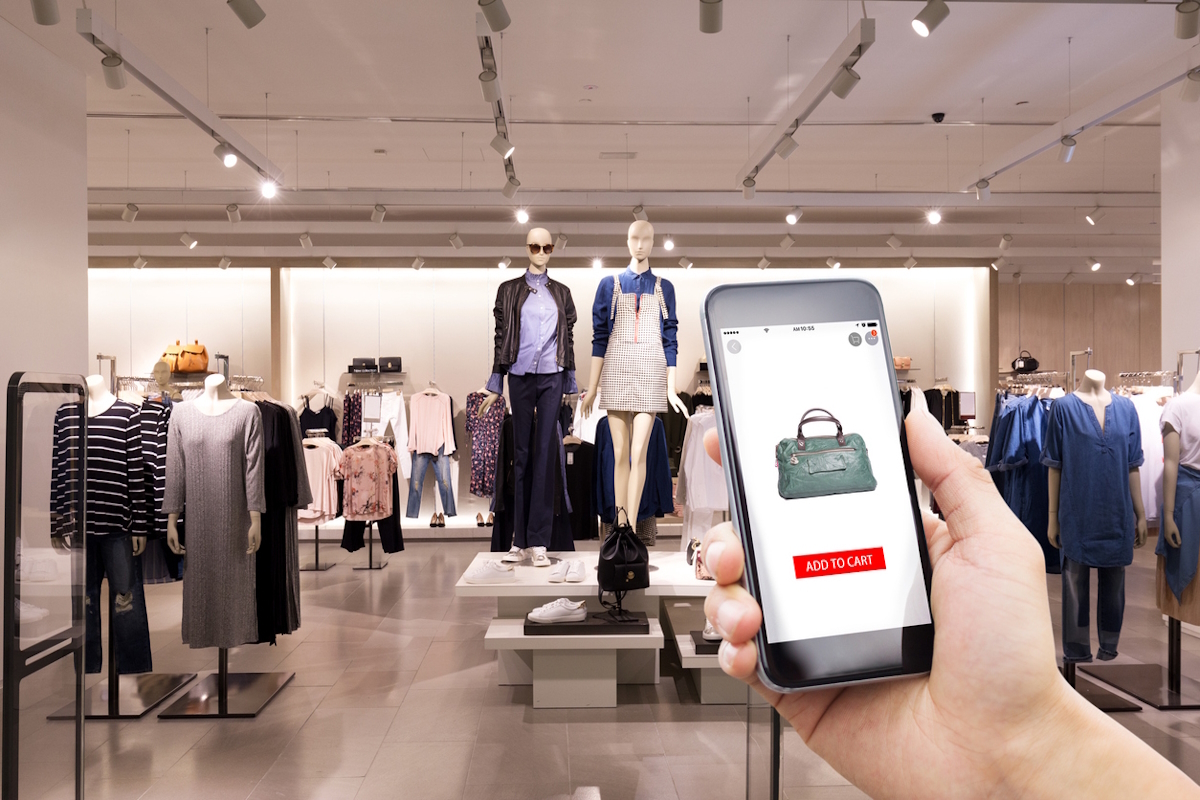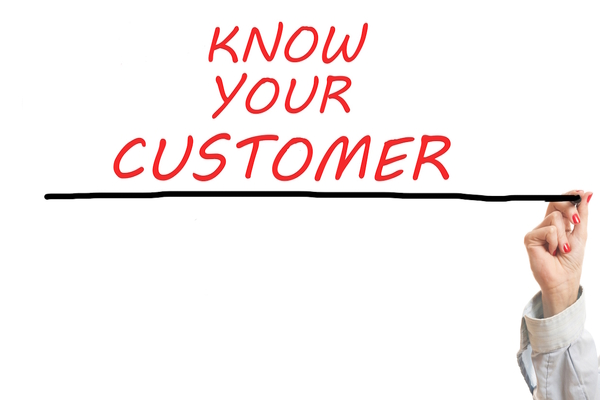Boom in clicks and mortar

Craig Summers at Manhattan Associates explores the boom in physical store openings linked to modern online shopping behaviour
With ecommerce forecasted to capture 41% of global retail sales by 2027, it is a wonder why retailers would open or invest in new physical stores. However, retailers like Macy’s, Nordstrom, Primark, Arc’teryx, Groupe Dynamite, Canada Goose, and North Face are investing in and opening new store concepts to support modern shoppers and provide competitive differentiation.
As new stores open around exciting new concepts, especially in the luxury goods segment, far from killing stores, ecommerce is actually delivering a renaissance for the traditional physical store.
The answer to this apparent paradox lies in the buying behaviours and preferences of modern shoppers. Retailers realise that today’s consumers use many sales channels in their buying journeys, and many omnichannel shoppers actually prefer to visit stores as part of that journey, with 73% of people tending to utilise multiple channels while shopping.
Digital (ecommerce) and offline (physical stores) are closely interconnected to provide modern shoppers with a rich, seamless shopping journey wherever that journey takes them. It is this rise of these blended experiences that is driving many retailers to consider repurposing their stores to meet the expectations of today’s consumers and the primary driver behind many new store openings.
Research shows that omnichannel shoppers are more valuable to retailers, suggesting that these shoppers spend 15% more per purchase than those who shop just on one channel, and analyst firm Forrester believes that 38% of offline retail sales are digitally influenced. With modern shopping journeys becoming more fluid and fluctuating, visiting multiple channels before purchasing online or in a store is just part of the shopping lexicon in 2024.
Beyond the challenge of effective omnichannel offerings however, rising labour costs and shortages within the labour market itself are both macroeconomic challenge that all retailers are faced with. While doing more with less is a glaring opportunity for retailers, the right tools are a strategic imperative if retailers are to engage, empower and enable store associates who are increasingly transient in their retail careers.
So how can organisations leverage both online and physical retail estates to capitalise on this new behaviour? And, what are the key building blocks these brands need to consider if they are to deliver that all-important seamless experience to the end customer, but also to engage and empower their store associates?
Below are five key areas brands need to focus on when considering the modern consumer’s expectation for seamless in-store and online retail experiences.
Flexible payments
According to Manhattan’s Unified Commerce Benchmark, consumers are 63% more likely to shop with retailers that offer their preferred payment options, while 51% of millennials and 48% of Gen Z claimed they would abandon a shopping cart if their preferred payment method wasn’t available. Flexible payment solutions, allowing customers to pay using their preferred payment method, whether credit card, digital wallet, contactless payment, cash, or even pay by link (irrespective of the channel they choose to shop in), are a must in today’s omnichannel digital age.
Providing modern shoppers with flexible payment options enables physical stores to meet their flexibility and convenience expectations. Stores can increase the chance of attracting shoppers by offering popular alternative payment methods and modern shoppers will likely return to stores offering their preferred payment method; and keeping them satisfied will encourage loyalty.
Omnichannel promotions
Retailers plan and execute promotions to increase sales, attract new customers, and enhance brand awareness, however, retailers can experience adverse effects from promotions (especially their impact on already low margins), if the correct technology approach is not implemented effectively.
Retailers need to focus more on promotional effectiveness, with a critical look at whether they bring the desired results to the bottom line and customer satisfaction. As with other omnichannel retail customer engagement areas, like inventory visibility, ordering, and fulfilment, retail promotions require unifying all sales channels at system, data, and process levels. Promotions must be defined once and shared seamlessly across channels with consistent targeting, qualification, and calculation logic.
If a customer is eligible online for a promotion, that promotion should be available in stores and the contact centre unless it is an exclusive online offer, yet in-store promotion execution remains a significant challenge to consistency. The fast-paced, chaotic environment of stores makes it difficult for store associates to present promotions to customers clearly and consistently. An omnichannel promotions engine can unify promotion execution across sales channels by providing a single source of truth for promotions logic.
Retail promotions are a critical part of the omnichannel customer journey that can help retailers realise various goals: from clearing out old inventory and introducing new products, to lifting declining sales, and building brand loyalty. Effective omnichannel promotions are well-planned, targeted to the right customers, and executed consistently across sales channels as an important part of the modern retail brand experience.
Clienteling
Modern shoppers place value on personalised shopping experiences. They appreciate tailor-made experiences that consider their individual preferences. In some retail segments, like high-end luxury goods, customers more than appreciate personalisation, they expect it. According to McKinsey, offering personalisation pays dividends and companies that get personalisation right have the potential to generate 40% more revenue.
Personalised one-on-one shopping experiences in physical retail stores provide a way for brick-and-mortar retailers to stand out from digital-only retailers. Adding clienteling capabilities in stores, such as Mobile Clienteling capabilities, seamlessly connects all store sales and service functions, equips store associates with rich customer information and provides advanced tools to personalise and enrich customer interactions anywhere in the store.
Virtual clienteling on the other hand is an up-and-coming area of clienteling, enabling store associates to continue interactions with customers once they leave the store, such as responding to customer questions on products via phone, text, or email and sharing additional information to help a customer make an informed purchase decision.
Whether in the store or beyond the four walls of a store, the key to clienteling in 2024 is enabling store associates to quickly view and use customer purchase history, engagement history, and preferences to personalise interactions and make recommendations.
Store order fulfilment
Modern shoppers like the convenience, immediacy, and shipping cost avoidance of buying online and picking up in-store (BOPIS), driving increased demand for this fulfilment service. Simultaneously, retailers are increasingly using stores to ship orders to reduce shipping costs and provide fast delivery.
Modern stores must provide store fulfilment efficiency, scalability, and accuracy that meets customer expectations while improving profitability. And, while BOPIS enables retailers to meet the modern shoppers’ need for convenience, it also allows retailers to increase store foot traffic and sales. A survey by the International Council of Shopping Centers found that 67% of BOPIS users buy additional items from a retailer when picking up their original order.
Physical stores are now multifunctional nodes in the omnichannel retail ecosystem, providing retailers with an attractive means to meet rising shopper demands for speed and convenience. When operationalised to meet growing volume demands and increasing customer expectations, store fulfilment can help retailers improve sales and customer satisfaction.
Unified returns and exchanges
Returns cost retailers $817 Billion in 2022, and 78% of shoppers say returns and exchanges are inconvenient, while 41% of shoppers find the retail returns and exchange process time-consuming.
And beyond the fiscal impact, returns are a significant contributor to CO2 emissions and landfill waste. In the UK, the British Fashion Council’s Institute of Positive Fashion Solving Fashion’s Product Returns report, published in March 2023, found that 3% of UK returns are not resold. Of this, 50% are sent to landfill, 25% to incineration and 25% are recycled, highlighting the environmental impact clearly.
Returns and exchanges are typically complicated for customers and costly for retailers. With the volume of returns and exchanges rising, retailers must find ways to create a frictionless return and exchange experience while protecting margins.
Unified returns and exchanges allow modern shoppers to return or exchange any item purchased from a retailer at a store regardless of the original sales channel, including online purchases. With unified returns and exchanges to stores for all purchases, retailers can provide customers with a convenient way to make a return or exchange with the instant gratification of an immediate refund or new item.
While meeting the needs of modern shoppers in this critical customer service area, unified returns and exchanges in stores help retailers reduce business and environmental costs by minimising the shipping of returns too.
Craig Summers is Managing Director UKI, MEA & Nordics at Manhattan Associates
Main image courtesy of iStockPhoto.com and zhudifeng

Business Reporter Team
Most Viewed
23-29 Hendon Lane, London, N3 1RT
23-29 Hendon Lane, London, N3 1RT
020 8349 4363
© 2024, Lyonsdown Limited. Business Reporter® is a registered trademark of Lyonsdown Ltd. VAT registration number: 830519543





